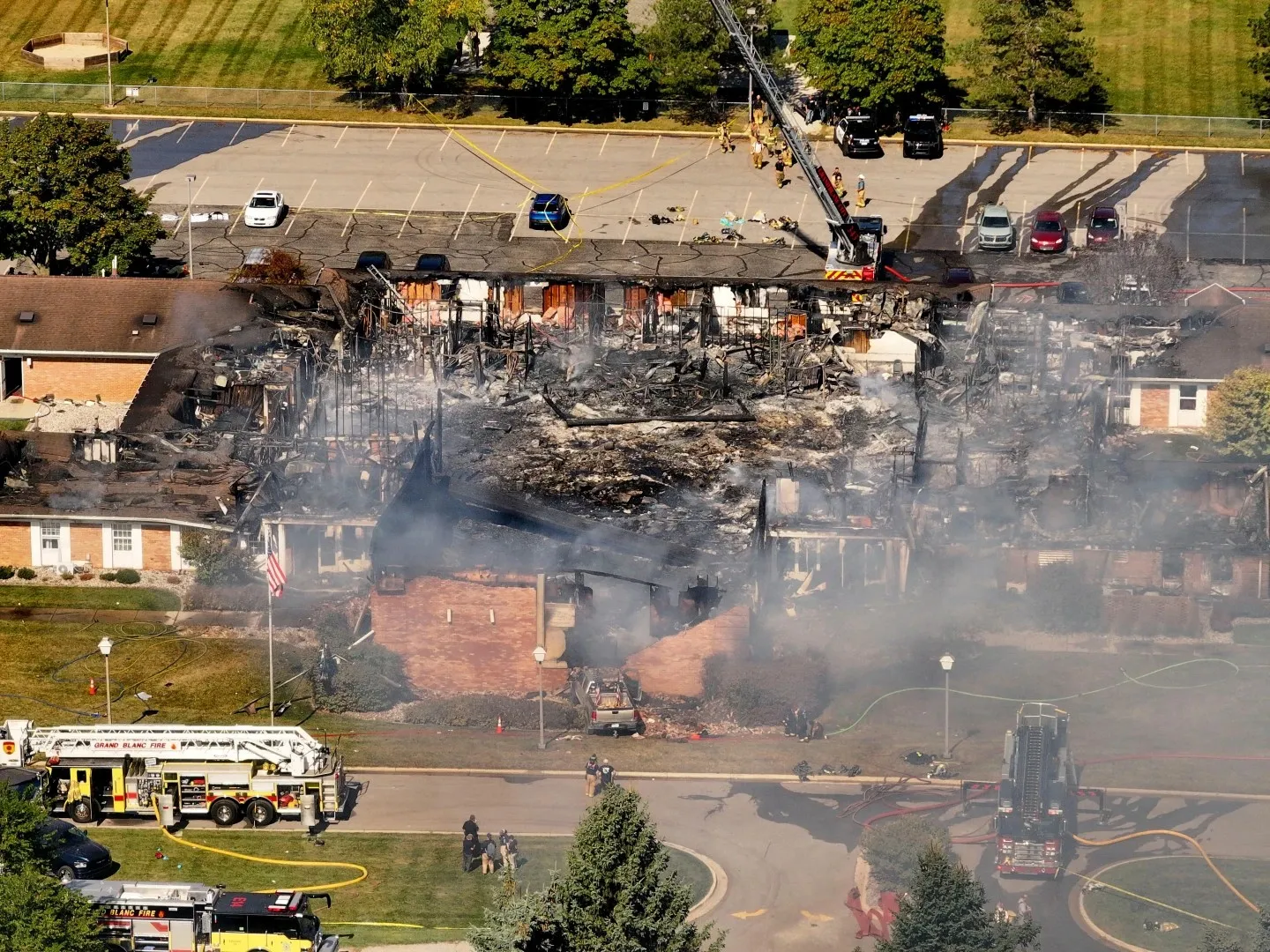In a quiet suburb of Detroit, where communities usually gather for peaceful worship services, a Sunday evening turned into a scene of horror. An armed man rammed the doors of The Church of Jesus Christ of Latter-day Saints, opened fire on parishioners, and set the building ablaze, leaving four dead and dozens injured. This act, which federal investigators are already classifying as "targeted violence," highlights a troubling trend of attacks on religious institutions in America, where firearms and ideological conflicts increasingly intersect with everyday life.
According to local police, the suspect was 40-year-old Thomas Sanford from neighboring Berrien — a man whose past, according to insider sources in law enforcement, includes a history of mental disorders and conflicts with religious communities. Sanford, driving a pickup truck, crashed into the church’s main entrance around 6:30 p.m. local time, turning an ordinary gathering into chaos. Exiting the vehicle with an automatic rifle — the details of which are still being verified, but which, according to preliminary data, was purchased legally — he began firing indiscriminately. “This was a premeditated attack aimed at maximum harm,” stated Police Chief William Renye at a press conference, emphasizing the quick response of his officers, who arrived at the scene within minutes and neutralized Sanford in the parking lot.
But the shooting was only the beginning. The Federal Bureau of Investigation (FBI) confirmed that Sanford used gasoline cans to set fire to the building, causing a blaze that raged for hours. Thick smoke and flames complicated evacuation efforts, and firefighters battled the fire into the early hours of the night. “We are still searching for missing persons in the ruins,” Renye cautioned, hinting that the number of victims could rise. According to medical officials, at least 15 people were hospitalized with burns, gunshot wounds, and carbon monoxide poisoning, including children and the elderly. This tragedy underscores the vulnerability of religious sanctuaries: data from the Center for Hate and Extremism shows that the number of attacks on churches in the U.S. has increased by 35% over the past decade, often motivated by anti-religious prejudices or personal grievances.
President Donald Trump, whose second term has been marked by heated debates on gun control, quickly responded in a post on Truth Social. "This appears to be yet another targeted attack on Christians in the United States of America," he wrote, calling for prayers for the victims and promising full federal support. His words resonate with the broader rhetoric of the administration, which emphasizes an "epidemic of violence," but critics, including Democrats in Congress, point to the lack of reforms such as strengthening background checks amid gun ownership. White House insiders, with whom I have spoken in the past, often emphasize that Trump sees such incidents as challenges to national unity, but his opponents accuse him of fueling polarization.
Michigan Governor Gretchen Whitmer, a longtime critic of Trump, expressed deep condolences to the Grand Blanc community. "My heart is broken for these people — violence is unacceptable in our country or anywhere," she stated, calling for increased security measures at religious establishments. Michigan, with its history of industrial decline and social tensions, is no stranger to mass shootings: recall only the Oxford High School tragedy in 2021 or recent incidents in Detroit. According to local leaders of the Mormon community, the church in Grand Blanc served as a hub for over 500 parishioners, offering not only spiritual support but also social programs — now, it has become a symbol of loss.
While investigators explore Sanford’s motives — whether it was religious hatred or personal revenge — this event raises questions about the effectiveness of the national violence prevention system. Every such story is not just statistics but a reminder of the deep divisions within American society. Federal agencies promise a thorough investigation, but for the families of the victims and the Grand Blanc community, answers are needed immediately. Will this tragedy be a catalyst for change, or just another chapter in the chronicle of incurable pain? Time will tell, but America cannot afford to wait.
